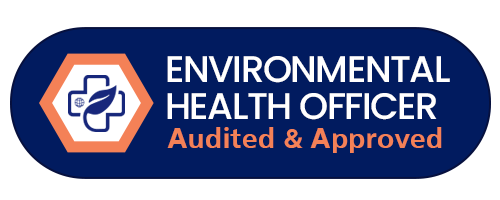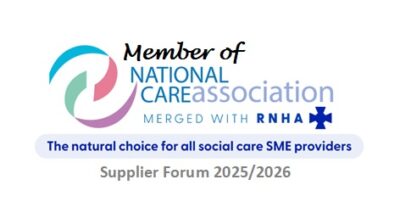Keeping Children Safe in Schools and Colleges: A Comprehensive Overview
Safeguarding children in educational settings is one of the most critical responsibilities of educators, school leaders, and support staff. The Safeguarding Children in Schools and Colleges (Level 2) course, offered by Caredemy, provides individuals with essential training to understand safeguarding principles, recognize signs of abuse, and implement protective measures. This vital training equips professionals with the tools necessary to ensure the safety and well-being of children in schools and colleges.
In this detailed overview, we will explore the course’s learning objectives, its structure, the audience it targets, and the individual units offered. Furthermore, we will elaborate on why safeguarding is crucial to educational settings and how this course addresses potential risks to children.
Overview of the Course
The Safeguarding Children in Schools and Colleges (Level 2) course is a CPD-accredited online training program designed to provide a foundational understanding of safeguarding practices. This course adheres to guidelines from the UK government and ensures professionals have the necessary knowledge to maintain a safe educational environment.
Key Highlights of the Course
- Duration: 2 hours
- CPD Points: 2 (Continuing Professional Development points)
- Assessment Format: Multiple-choice graded exam
- Certification: Free downloadable certificate upon successful completion; option to purchase a hard copy
Learning Objectives
The course aims to provide learners with crucial safeguarding knowledge and the ability to perform their duties effectively in educational settings. By the end of the training, participants will be able to:
1. Describe the Term Safeguarding
Safeguarding involves protecting children from abuse, neglect, exploitation, and harm, while creating environments where children feel safe and supported.
2. Define the Terms ‘Child’ and ‘Young Person’
The course provides legal and contextual definitions to ensure clarity and consistency across safeguarding practices.
3. Explain Who Is Responsible for Safeguarding
Every person working in an educational setting has a statutory duty of care. This unit elaborates on the roles of teachers, support staff, volunteers, governors, and designated safeguarding leads (DSLs).
4. Define the Terms ‘Abuse’ and ‘Child Maltreatment’
Abuse and maltreatment are key issues covered in this unit. Definitions provided include:
- Emotional abuse
- Physical abuse
- Sexual abuse
- Neglect
Participants learn how to recognize warning signs.
5. Understand the Impact of Parents’ and Carers’ Circumstances on Children
Examines risk factors such as domestic violence, mental health issues, substance abuse, and other parental challenges that can directly or indirectly affect a child’s safety.
6. Describe Internet and Social Networking Risks
Focuses on challenges such as online grooming, cyberbullying, and exposure to inappropriate content, alongside strategies to mitigate risks.
7. Describe Local Procedures for Reporting Concerns
Explains the importance of adhering to reporting protocols to identify concerns and escalate them appropriately.
8. Identify Sources of Support
Covers partnerships with external agencies, inter-professional collaboration, and other available resources to ensure the welfare of children.
Detailed Units and Topics Covered
This course explores advanced safeguarding concepts while ensuring clarity for professionals or volunteers who may be new to the field. Key units include:
1. Recognizing Signs of Abuse
Provides detailed insights into various forms of abuse, including how to identify:
- Emotional abuse: Persistent criticism, rejection, or humiliation
- Physical abuse: Unexplained injuries or frequent bruising
- Sexual abuse: Inappropriate knowledge or disclosure by the child
2. Coercive Behavior and Domestic Violence
Highlights the disruption caused by coercive control and domestic violence, stressing the importance of identifying red flags in children from unstable home environments.
3. Child Trafficking
Introduces potential indicators of trafficking, such as children being withdrawn, anxious, or having unexplained absences.
4. Female Genital Mutilation (FGM)
Outlines the practice’s devastating impact on young girls and emphasizes the legal obligation to report FGM cases under UK law.
5. Radicalization
Covers the UK’s Prevent duty, ensuring educators can identify signs of radicalization and intervene appropriately.
6. Responding to Neglect
Discusses different levels of neglect—mild to chronic—and highlights the importance of early intervention.
7. Safe Use of Technology
Focuses on preventing online harassment, misinformation, and exploitation via social media, gaming platforms, and other digital communications.
Who Is the Course For?
The Safeguarding Children in Schools and Colleges (Level 2) course is designed for a broad audience, including but not limited to:
- Teachers and Teaching Assistants: Frontline staff who must recognize signs of abuse and uphold safeguarding practices.
- School Leaders and Senior Management: Responsible for overseeing safeguarding policies and systems.
- Designated Safeguarding Leads (DSLs): Managing safeguarding coordination and external agency collaboration.
- School Governors and Trustees: Strategic oversight requires in-depth understanding of safeguarding policies and outcomes.
- Support Services Staff: Pastoral care providers, school counselors, and safeguarding officers.
- Volunteers and External Partners: Sports coaches, visiting speakers, and community professionals must follow safeguarding protocols.
This training is suitable for induction, refresher training, or knowledge enhancement, making it accessible to professionals at all levels.
The Convenience of Learning
The online format provides flexibility, enabling learners to complete modules from anywhere, making it accessible to international participants. The course requires a passing grade of 70% on a multiple-choice exam. Learners can retake the exam for free and receive certification upon successful completion.
Why Safeguarding Is Vital for Schools
Educational settings are spaces where children should feel safe and nurtured. Safeguarding ensures that children:
- Are protected from harm.
- Benefit from environments conducive to learning and growth.
Failing to implement robust safeguarding measures can have devastating consequences, including harm to children and reputational damage for institutions. This training empowers staff to:
- Handle concerns sensitively.
- Collaborate effectively with agencies.
- Promote emotional and social well-being alongside academic success.
Certification and Additional Benefits
On completion, participants receive a CPD-accredited certificate, which adds to their professional credentials. Caredemy also provides:
- Learner dashboards for tracking progress (ideal for team training).
- A dedicated support team for assistance throughout the learning process.
Final Thoughts
The Safeguarding Children in Schools and Colleges (Level 2) course by Caredemy plays a pivotal role in preparing professionals to protect children effectively. Whether addressing abuse, online risks, or radicalization, this training ensures participants are equipped to foster safeguarding awareness and accountability in educational environments.
By enrolling in this course, individuals commit to creating a culture of vigilance, intervention, and care that ultimately helps ensure every child’s safety and well-being. Safeguarding is not merely an obligation—it is a responsibility to safeguard the future of our communities and schools.








